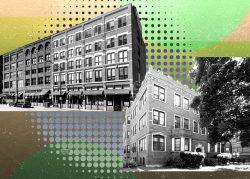Chicago, home to the biggest jump in foreclosures among major U.S. cities, is just catching up on pre-pandemic cases as backlogged courts process filings stymied by pandemic-era moratoriums.
Chicago had 3,101 new foreclosure filings in the first quarter, leading New York’s 2,580, according to Attom, an Irvine, California-based real estate data firm. That means most were at least 120 days delinquent before pandemic-era consumer protections froze foreclosure processes.
That’s still less than the 1 percent of loans that go into foreclosure on an average year, even though they’re increasing, said Rick Sharga, an executive vice president at Attom.
Loan officers are also cautious about putting someone into the foreclosure process who doesn’t have to be there, according to Sharga.
“There are no indications that we should be expecting a huge wave of foreclosures in Chicago, Illinois or the country as a whole,” he said in an interview.
Unlike the Great Recession, 90 percent of all borrowers have positive equity in the house, which means many borrowers going through foreclosure can sell for a profit and walk away.
Nationally, the industry is at an all-time low for bank-owned sales. Most homes that do go into foreclosure are being sold at auction or through local sheriff sales, depending on local laws.
Low inventory, strong demand, and homeowner equity are all reasons foreclosures won’t lead to greater issues within the housing market, Sharga said.
“This is not something people should get alarmed about when they look at it and they fear we’re going to see another market meltdown,” he said. “If you’re a real estate investor, the message this time is you’re going to need to get involved earlier in the cycle, work with distressed homeowners or go to auction.”
Read more


